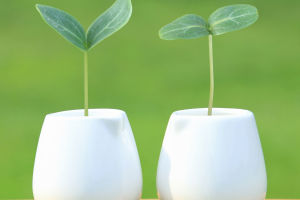Ah, the humble bowl. We all have them, we all use them, and yet, we probably don’t give them much thought.
But bowls have evolved over the years from basic vessels for soup to versatile dining tools that shape how we eat, what we eat, and even how much we eat.
That’s right - the design of your bowl can influence your dining experience in ways you never even thought possible!
History
Bowls have been essential to human life for millennia, tracing back to ancient civilizations. Archaeologists have unearthed bowl-like vessels dating back to 18,000 BCE, crafted from stone, wood, and clay. They served not just as eating tools but as containers for storage and preparation, evolving in design and utility as human societies advanced.
From the ornate bowls of ancient Greece, often decorated with mythological scenes, to the minimalist and durable bowls used in early China, the design of these vessels has always reflected cultural priorities. In the medieval period, wooden bowls were common in Europe, while Japan was mastering the art of lacquered bowls, which would later become integral to tea ceremonies.
Basic
Let’s start with the basics. Traditionally, bowls were all about function: hold liquid, don’t spill, and maybe look good while doing it. Simple, right? But as food culture evolved, so did bowl design. Today’s bowls aren’t just for soup or cereal; they’re for everything from salads to smoothie bowls to ramen. And each type of bowl has its own specific design purpose. For instance, deep bowls with narrow bottoms help keep your ramen noodles submerged in broth, while wide, shallow bowls make salads look more bountiful and inviting.
Around The World
Different cultures have embraced bowls in unique ways. In China, rice bowls are central to family meals, symbolizing togetherness. Japanese ramen bowls, designed for comfort and function, often have a wide base for noodles and broth. In Morocco, the tagine bowl is essential for slow-cooked stews, and in the Mediterranean, ceramic bowls are used for fresh salads and dips like hummus. Each bowl tells a story of its people, reflecting their culinary traditions and lifestyles.
Sizing
But it’s not just about making food look good. The shape and size of your bowl can also affect portion control. Studies have shown that people tend to eat less when using smaller, deeper bowls because they perceive the bowl as fuller. On the flip side, larger, shallow bowls make portions look smaller, which can sometimes trick you into eating more than you intended. So next time you’re trying to watch your portions, it might be as simple as choosing the right bowl.
New Era
Then there’s the rise of “bowl food.” You know, the Buddha bowls, poke bowls, and grain bowls that have taken over Instagram feeds and café menus alike. These bowls offer a balanced mix of protein, carbs, and veggies all in one stylish container. It’s no accident that these meals are served in bowls - they lend themselves to layering and mixing, making each bite a blend of textures and flavors.
The evolution of the bowl is a reflection of how our eating habits have changed. We’re moving away from the traditional “meat and two veg” plated meals and towards more flexible, all-in-one dining options. And the bowl is leading the charge, offering versatility, style, and practicality all in one.
From now on take a moment to appreciate the design of your next bowl. It’s not just holding your food - it’s shaping your entire dining experience!
Kitchen Storage ~ My Plates, Cups, & Bowls
Video by Becca the Bargainer


